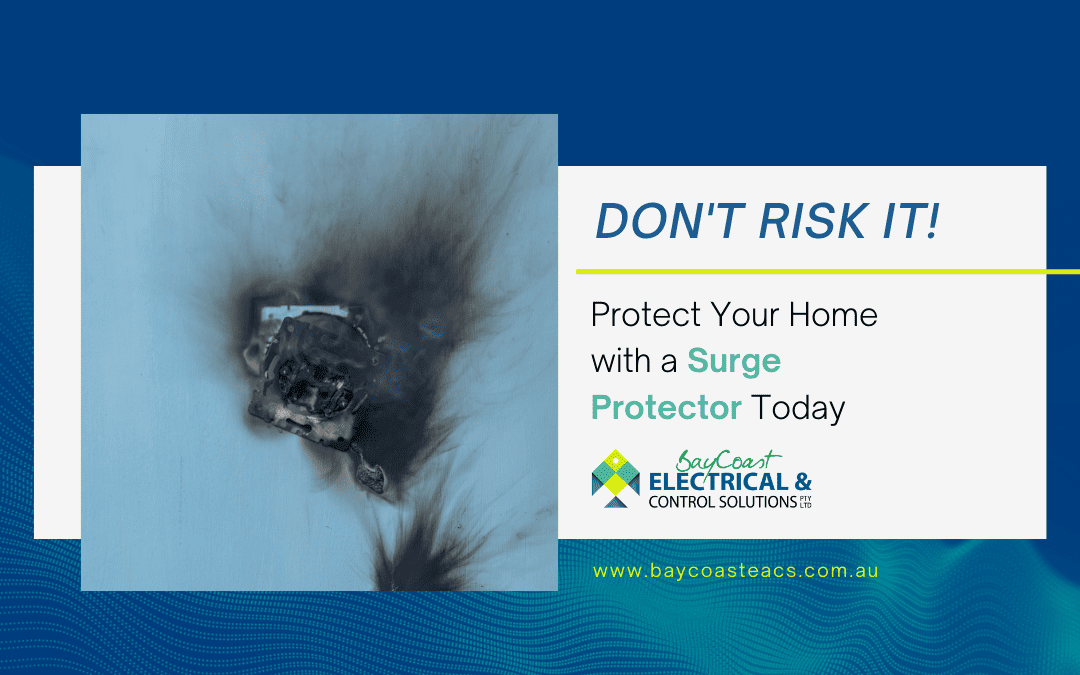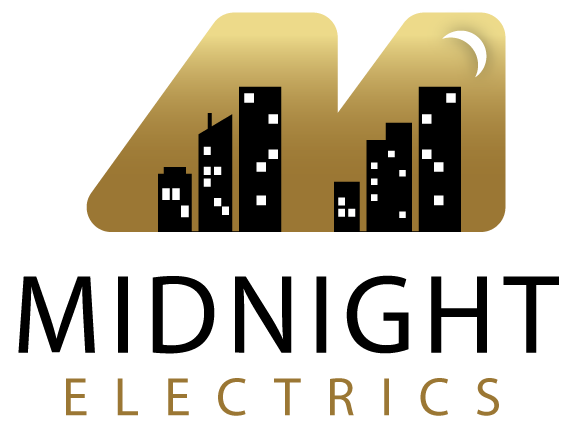Protect Your Home with a Surge Protector
As homeowners, we often take our home’s electrical system for granted until something goes wrong. One critical, yet often overlooked, part of this system is the surge protector, a device designed to protect our home and appliances from power surges.
Understanding Power Surges
In the realm of electricity, a power surge, also commonly referred to as an electrical surge, signifies a brief, sudden escalation in your home’s electrical current. These surges are not uniform; they differ in both length and severity but share the capability to inflict harm on your home’s electrical infrastructure and appliances.
Overloaded circuits are a common consequence of power surges, and in extreme cases, these surges can generate enough heat to melt plastic and metal parts of your electrical system. This heat generation, combined with the strain on your
electrical system, can even initiate electrical fires. Hence, understanding power surges and taking appropriate measures to combat them is a crucial part of responsible homeownership.
The Causes of Power Surges
Electrical surges are a common occurrence, particularly during storm seasons when lightning strikes and fluctuations in voltage from transformers can disrupt power supply. These surges pose a significant risk to the sensitive electronics found in homes and offices.
Keep your Electrical System Safe
Additionally, such surges can compromise the safety and functionality of essential electrical systems, underscoring the importance of surge protection measures to safeguard both property and occupants.
Power surges can originate from a multitude of sources, both external and internal.
External surges are often a result of power grid switching by your local utility company, leading to a sudden influx of electricity into your home. Natural occurrences, such as lightning strikes, though rare, can also cause severe power surges that can be particularly destructive.
On the other hand, internal power surges are typically caused by large appliances within your home, such as air conditioners or refrigerators, turning on and off. These appliances require a substantial amount of electricity to operate, and their demand can create a temporary spike in your home’s power supply.
Power Surges are Expensive
Additionally, faulty wiring and issues with the utility company’s equipment can lead to power surges. In some instances, power surges can even be the result of issues with the electrical wiring in your neighbourhood.
The unpredictability of power surges, coupled with their potential to occur at any moment, underscores the importance of installing a surge protector in your home to safeguard against these electrical anomalies. With a surge protector, you can significantly reduce the risk of damage from these often unforeseen electrical events.
The financial repercussions can be substantial, often resulting in costly repairs or replacements that run into the thousands of dollars.
The Potential Damages
Power surges have the capacity to wreak havoc on your home’s electrical system, leading to substantial losses. Regular, small surges often go unnoticed but can cause gradual deterioration in your electronics and appliances, reducing their efficiency and lifespan over time.
On the other extreme, intense power surges have the power to instantaneously incapacitate your appliances or even spark an electrical fire.
Costs Associated with Residential Fires
The aftermath of such surges can be staggering, ranging from the inconvenience and cost of replacing damaged appliances to the far more severe costs associated with residential fires. With power surges posing such a significant threat, the importance of implementing a preventive strategy becomes all the more apparent.
A quality surge protector can serve as your first
line of defence against the potential damages caused by power surges.
The Worst-Case Scenario
The grimmest outcome for a power surge is the outbreak of an electrical fire. The intense heat generated by a surge has the potential to degrade and melt wires and insulation, creating a perfect setup for a catastrophic fire.
This is not just a threat to your home, but also poses a significant safety risk for the occupants.
Additionally, a surge can wreak havoc on your appliances’ electrical components, triggering malfunctions or even total failure of the equipment.
Avoid Expensive Replacement Costs
These incidents could lead to expensive repair or replacement costs. The graveness of such a situation emphasises the critical importance of proactive measures like installing a surge protector.
While the consequences of a power surge can be severe, remember that steps can be taken to protect your home and belongings from this dangerous electrical event.
Introduction to Surge Protectors
The heart of a home’s defence against power surges is a device called a surge protector. Functioning as the gatekeeper for your home’s electrical system, a surge protector monitors the voltage flowing through your circuits. When it detects a sudden, excess voltage – indicative of a power surge – it steps in.
A surge protector, known by various names such as surge suppressor, spike suppressor, or transient voltage surge protector (SPD), is an essential device designed to safeguard electronic equipment from transient overvoltage. These units are equipped with specialised circuits that swiftly detect and divert power surges away from connected electrical appliances, channelling them safely to the ground.
Shield Appliances
Among the electronic devices shielded by surge protectors are appliances like refrigerators, shielding them from potential damage caused by power surges or spikes. Power surges and spikes occur when there are abrupt increases in voltage beyond acceptable levels. Typically, a power surge lasts for more than three nanoseconds, while a power spike endures for two nanoseconds or less.
Introduction to Surge Protectors
The heart of a home’s defence against power surges is a device called a surge protector. Functioning as the gatekeeper for your home’s electrical system, a surge protector monitors the voltage flowing through your circuits. When it detects a sudden, excess voltage – indicative of a power surge – it steps in.
A surge protector, known by various names such as surge suppressor, spike suppressor, or transient voltage surge protector (SPD), is an essential device designed to safeguard electronic equipment from transient overvoltage. These units are equipped with specialised circuits that swiftly detect and divert power surges away from connected electrical appliances, channelling them safely to the ground. Among the electronic devices shielded by surge protectors are appliances like refrigerators, shielding them from potential damage caused by power surges or spikes. Power surges and spikes occur when there are abrupt increases in voltage beyond acceptable levels. Typically, a power surge lasts for more than three nanoseconds, while a power spike endures for two nanoseconds or less.
User Friendly Device
This device channels the surge’s excessive electricity away from your home’s circuitry and into a grounding wire. This action stops the damaging overvoltage from infiltrating your electrical system and harming your appliances. Thus, with a surge protector, your electrical system gains a reliable safeguard that can help avert the damage and dangers associated with electrical surges. Despite its seemingly complex role, a surge protector is a user-friendly device that’s straightforward to use. Installing one in your home can provide not just essential protection for your appliances, but also peace of mind for you and your family. The role and benefits of surge protectors make them an essential addition to any home’s electrical system.
Why You Should Consider Installing a Surge Protector
Investing in a surge protector could potentially save you from substantial costs related to replacing damaged appliances or wiring. More importantly, it provides a safeguard against the risk of electrical fires in your home, offering you and your family peace of mind.
While strip surge protectors offer a basic level of protection, a whole-home surge protector can offer more extensive coverage.
Australians would enlist the expertise of an electrician to install a surge protector for several reasons:
- Protection Against Electrical Storms:
Australia experiences frequent electrical storms, particularly in certain regions like the east coast. Lightning strikes can result in sudden power surges that may damage sensitive electronic equipment. Installing surge protectors can help mitigate the risk of damage during these storms.
- Voltage Fluctuations:
In some areas, voltage fluctuations are common due to factors such as ageing infrastructure or fluctuations in power demand. These fluctuations can lead to power surges that may harm appliances and electronic devices. Surge protectors act as a defence mechanism against such fluctuations, safeguarding valuable equipment.
- Increased Reliance on Electronics:
With the growing reliance on electronic devices in both residential and commercial settings, the need to protect these investments becomes paramount. Surge protectors offer an additional layer of defence against unexpected electrical events, prolonging the lifespan of electronic equipment and minimising the risk of costly repairs or replacements.
- Insurance Against Power Grid Issues:
While power outages and
grid issues are relatively rare in Australia compared to some other parts of the world, they can still occur. Surge protectors provide insurance against potential issues arising from the power grid, ensuring that electrical devices remain safe and operational even during challenging circumstances.
- Compliance with Safety Standards:
Employing a qualified
electrician to install surge protectors ensures compliance with safety standards and regulations.
Electricians possess the expertise to assess the specific needs of a property and recommend suitable surge protection solutions tailored to the environment, enhancing safety and peace of mind for homeowners and businesses alike. Overall, having an electrician install surge protectors offers Australians a proactive approach to safeguarding their electronic devices and equipment, ensuring reliable performance and minimising the risk of damage from electrical surges and other related issues.
If you’re uncertain about what type of surge protector would best suit your home, or if you need assistance with installation, we’re here to help. Ensuring the safety and efficiency of your home’s electrical system is our priority.
Why take a chance when you can protect your home with a surge protector today?

































